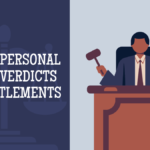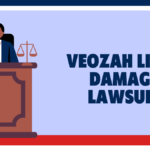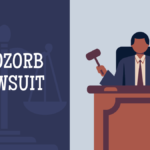For decades, firefighters at airports and military bases have relied on a specialized foam to extinguish fuel fires. The foam, known as AFFF, is more effective than water at extinguishing gasoline and jet fuel blazes. But now thousands of these firefighters are getting cancer at alarming rates.
A massive lawsuit is unfolding across America. More than 11,000 people have sued the companies that made this firefighting foam, claiming it contains dangerous chemicals that cause cancer. The legal battle centers on a simple question: Did these companies know their product was toxic and hide that information from the people who used it?
Court documents suggest the answer may be yes. Internal company emails and studies dating back to the 1970s show manufacturers were aware of serious health risks but continued selling the foam without proper warnings, according to court filings.
AFFF Lawsuit Settlement Amounts and Compensation
The financial stakes in AFFF litigation continue reaching unprecedented levels as corporate defendants face mounting pressure to resolve claims before devastating trial verdicts. Recent settlement developments reveal the massive scope of potential compensation awaiting qualified claimants.
Current AFFF Settlement Values by Case Type
Legal analysts examining comparable mass tort outcomes and current negotiation trends predict specific compensation ranges based on exposure severity and health outcomes:
Premium Tier Settlements ($500,000 – $1,200,000)
- Professional firefighters with kidney or testicular cancer
- Military personnel with documented base contamination exposure
- Multiple cancer diagnoses in younger plaintiffs
- Clear occupational exposure with minimal alternative risk factors
Standard Tier Settlements ($200,000 – $600,000)
- Thyroid cancer with moderate exposure documentation
- Liver cancer cases with environmental exposure
- Ulcerative colitis in high-exposure occupations
- Community members with severe health impacts
Basic Tier Settlements ($75,000 – $300,000)
- Thyroid disease without cancer progression
- Lower-level exposure with chronic health conditions
- Cases with mixed causation factors
- Older plaintiffs with shorter life expectancy
Major Corporate Settlement Announcements
Recent developments demonstrate defendants’ willingness to pay substantial sums rather than face unpredictable jury verdicts:
- 3M Corporation: $12.5 billion for water system contamination claims
- DuPont/Chemours/Corteva: $1.185 billion collective settlement fund
- Johnson Controls (Tyco): $750 million resolution agreement
- Carrier Global: $615 million in multiple settlement deals
These water contamination settlements create powerful precedent for individual health claim negotiations, with personal injury awards typically exceeding environmental cleanup costs due to pain and suffering damages.
Who Qualifies for AFFF Firefighting Foam Lawsuits
Determining lawsuit eligibility requires careful analysis of exposure patterns, health outcomes, and documentation availability. The litigation encompasses multiple plaintiff categories with varying qualification criteria and compensation potential.
Primary Qualifying Exposure Groups
Professional Firefighting Personnel Municipal fire departments nationwide utilized AFFF for training drills and emergency responses from the 1970s through recent phase-out efforts. Qualification factors include:
- Employment duration at departments using foam training
- Participation in Class B fire suppression activities
- Direct foam contact through equipment maintenance
- Base assignments where foam testing occurred regularly
Military Service Members Across All Branches Armed forces extensively deployed AFFF at installations, vessels, and training facilities globally. High-risk military exposures include:
- Navy shipboard fire suppression system operation
- Air Force flight line and hangar firefighting duties
- Army base fire department assignments
- Marine Corps aviation facility personnel
Aviation Industry Workers Commercial airports maintain AFFF systems for runway safety and aircraft emergency response. Qualifying aviation exposures encompass:
- Ground crew fuel fire response training
- Aircraft rescue and firefighting (ARFF) personnel
- Airport maintenance staff handling foam systems
- Cargo handling teams at military air terminals
Industrial Facility Employees Manufacturing plants, refineries, and chemical facilities deploy AFFF for process safety protection. Industrial exposure categories include:
- Chemical plant emergency response teams
- Petroleum refinery firefighting personnel
- Manufacturing facility safety coordinators
- Contractor maintenance crews servicing foam systems
Community Environmental Exposure Qualification
Contaminated Water Supply Areas: Residential communities near AFFF-using facilities often consumed contaminated groundwater for extended periods before discovering pollution. Geographic risk factors include:
- Proximity to military installations with documented contamination
- Residential areas near commercial airports
- Communities downstream from industrial AFFF users
- Municipal water systems with confirmed PFAS detection
Health Condition Requirements for AFFF Claims
Primary Qualifying Medical Conditions Scientific research establishes the strongest causation evidence for specific health outcomes:
- Kidney Cancer: Requires a minimum 15-year exposure period with documented occupational contact.
- Testicular Cancer: Qualifying with 15+ years of exposure timeframe and repeated foam contact.
- Thyroid Diseases: Including hypothyroidism, hyperthyroidism, and Hashimoto’s with 2+ years of exposure.
- Ulcerative Colitis: Inflammatory bowel condition qualifying with 2+ years of documented exposure.
- Liver Cancer: Emerging evidence supports claims with significant occupational exposure.
- Thyroid Cancer: Recent studies confirm an elevated risk with prolonged PFAS contact.
Secondary Qualifying Conditions: Additional health problems may qualify based on individual exposure circumstances:
- Pancreatic cancer with substantial foam contact history.
- Prostate cancer in younger male plaintiffs with occupational exposure.
- Non-Hodgkin’s lymphoma with documented environmental contamination.
- Bladder cancer cases with extended exposure periods.
AFFF Cancer Lawsuit Types and Legal Claims
The litigation encompasses multiple legal theories designed to hold manufacturers accountable for decades of alleged misconduct while providing comprehensive compensation for diverse plaintiff categories.
Product Liability Claims Against AFFF Manufacturers
Defective Design Allegations Plaintiffs argue that AFFF products contained inherently dangerous PFAS chemicals that made the foam unreasonably hazardous for intended uses. Key arguments include:
- Alternatively, safer formulations were technically feasible
- Risk-benefit analysis favored fluorine-free alternatives
- Industry knowledge of health dangers preceded widespread deployment
- Manufacturing decisions prioritized effectiveness over user safety
Failure to Warn Claims Despite internal knowledge of PFAS health risks, manufacturers allegedly provided inadequate warnings to end users. Specific allegations encompass:
- Omission of cancer risk warnings on product labels
- Failure to update safety data sheets with emerging health information
- Inadequate training materials for firefighting personnel
- Concealment of internal toxicity studies from regulatory agencies
Negligence and Corporate Misconduct Theories AFFF Firefighting Foam Lawsuit
Research and Development Negligence Manufacturers allegedly failed to conduct adequate health and safety testing before marketing AFFF products. Negligence claims include:
- Insufficient toxicological studies during product development
- Failure to monitor long-term health effects among users
- Inadequate investigation of environmental persistence concerns
- Negligent response to emerging scientific evidence
Fraudulent Concealment of Known Risks. Internal documents suggest companies possessed knowledge of PFAS dangers decades before public disclosure. Concealment allegations involve:
- Suppression of adverse health study results
- Misleading regulatory submissions minimize risk evidence
- Failure to share toxicity information with government agencies
- Active promotion of products despite known health concerns
How to File an AFFF Lawsuit in 2025
The legal process for pursuing AFFF compensation requires strategic planning, comprehensive documentation, and experienced legal representation familiar with complex mass tort procedures.
Essential Documentation for AFFF Claims
Employment and Military Service Records: Establishing exposure requires detailed employment documentation proving AFFF contact opportunities:
- Military personnel files showing base assignments and duties
- Fire department employment records indicating foam training participation
- Aviation industry work history at facilities using AFFF systems
- Industrial employment at facilities with foam fire protection
Medical Record Compilation: Health condition documentation forms the foundation of compensation claims:
- Complete oncology records for cancer diagnoses
- Pathology reports confirming specific cancer types
- Treatment summaries detailing medical interventions
- Physician statements linking conditions to chemical exposure
Exposure Timeline Development Attorneys require detailed chronological exposure histories:
- Specific dates and locations of foam contact
- Duration and frequency of exposure incidents
- Training exercise participation records
- Environmental contamination testing results
Legal Process Timeline and Expectations (AFFF Firefighting Foam Lawsuit)
Initial Case Investigation (30-60 Days) Qualified attorneys conduct comprehensive case evaluations, including:
- Medical record review by legal nurse consultants
- Employment history verification through official sources
- Expert witness consultation regarding causation opinions
- Preliminary damage assessment and case valuation
Federal Court Filing and MDL Integration Qualifying cases enter the federal multidistrict litigation system:
- Complaint filing in the appropriate federal district court
- Transfer to the South Carolina MDL for coordinated proceedings
- Integration with discovery schedules affecting thousands of cases
- Participation in bellwether trial selection processes
Discovery Phase Participation (6-18 Months) The litigation involves extensive information exchange:
- Document production regarding exposure circumstances
- Deposition testimony about personal exposure history
- Medical examination by independent physicians
- Expert witness development for causation testimony
AFFF Lawsuit Updates and Trial Schedule 2025
Recent legal developments demonstrate accelerating momentum toward comprehensive resolution as judicial pressure mounts and settlement negotiations intensify behind closed doors.
Upcoming Trial Dates and Bellwether Strategy (AFFF Firefighting Foam Lawsuit)
October 2025 Initial Trial Schedule Federal Judge Richard Gergel has established aggressive timelines for representative trials:
- First kidney cancer trial commencing October 20, 2025
- Additional cancer-specific trials will follow quarterly thereafter
- Thyroid disease and ulcerative colitis trials scheduled for early 2026
- Environmental contamination cases proceeding on a parallel track
Bellwether Case Selection Criteria: The court prioritizes representative cases with clean exposure profiles:
- Clear occupational AFFF contact with minimal alternative causes
- Strong medical causation evidence linking exposure to diagnosis
- Comprehensive documentation supporting damage calculations
- Geographic diversity representing different contamination sources
Settlement Negotiation Momentum
Judicial Pressure for Pre-Trial Resolution Judge Gergel continues emphasizing settlement urgency in recent court conferences:
- Mandatory mediation sessions scheduled for major defendants
- Discovery deadline acceleration to pressure settlement talks
- Warning of potential punitive damages exposure at trial
- Encouragement of good-faith negotiation participation
Behind-the-Scenes Negotiation Indicators: Multiple signals suggest active settlement discussions:
- Rapid case filing increase, suggesting lawyer preparation for cutoff dates
- Corporate defendant coordination indicates ca ollective negotiation strategy
- Insurance carrier involvement in liability assessments
- Plaintiff leadership coordination regarding settlement framework development
AFFF Lawsuit Attorneys and Legal Representation
Selecting qualified legal representation significantly impacts case outcomes, settlement values, and overall litigation experience. AFFF cases require specialized expertise spanning environmental law, mass tort procedures, and military/firefighting industry knowledge.
Essential Attorney Qualifications (AFFF Firefighting Foam Lawsuit)
Mass Tort Litigation Experience Successful AFFF representation requires specific procedural expertise:
- Federal multidistrict litigation familiarity
- Complex discovery management capabilities
- Bellwether trial preparation experience
- Settlement negotiation track record in environmental cases
Scientific and Medical Knowledge AFFF cases involve sophisticated causation arguments requiring attorneys with:
- PFAS chemistry and toxicology understanding
- Medical expert witness relationship networks
- Environmental contamination assessment capabilities
- Occupational exposure evaluation expertise
Resource and Financial Capacity. Effective representation demands substantial financial investment:
- Expert witness funding for medical and scientific testimony
- Discovery cost advancement, including document review and depositions
- Trial preparation resources for graphics, demonstratives, and jury consultants
- Settlement negotiation leverage through case preparation quality
Legal Fee Arrangements and Cost Structures (AFFF Firefighting Foam Lawsuit)
Contingency Fee Standards Most AFFF attorneys accept cases on contingency arrangements:
- No upfront attorney fees required from clients
- Legal fees are paid only upon successful case resolution
- Typical contingency percentages range from 33-40% of recovery
- Expense advancement by law firms with recovery from settlement proceeds
AFFF Health Effects and Medical Evidence
Scientific research continues to strengthen the connection between AFFF exposure and serious health consequences as medical studies document elevated disease rates among exposed populations.
Primary Health Conditions with Strong Scientific Support
Kidney Cancer Causation Evidence: Multiple epidemiological studies demonstrate elevated kidney cancer rates:
- Military personnel studies show a doubled cancer incidence
- Occupational cohort research among firefighting professionals
- Dose-response relationships between exposure duration and cancer risk
- Biomarker studies confirming PFAS accumulation in kidney tissue
Testicular Cancer Research Findings Recent National Cancer Institute research provides compelling evidence:
- Air Force servicemen’s study demonstrating a significant risk elevation
- Young adult cancer patterns are inconsistent with typical risk factors
- Occupational exposure correlation with cancer development timing
- International studies confirming similar risk patterns globally
Thyroid Disorder Documentation Endocrine disruption research establishes clear causation pathways:
- Population studies near contaminated military installations
- Occupational health surveys among firefighting personnel
- Biomonitoring studies documenting thyroid hormone disruption
- Clinical evidence of autoimmune thyroid disease development
Emerging Health Risks Under Investigation (AFFF Firefighting Foam Lawsuit)
Immune System Suppression Preliminary research suggests PFAS exposure compromises immune function:
- Reduced vaccine effectiveness among exposed populations
- Increased infection susceptibility in occupational cohorts
- Autoimmune disease elevation in contaminated communities
- Childhood immune development is impacted by prenatal exposure
Cardiovascular Disease Connections Cardiovascular research reveals concerning patterns:
- Elevated cholesterol levels in exposed individuals
- Hypertension development correlated with exposure duration
- Cardiac arrhythmia increases among firefighting personnel
- Stroke risk elevation in contaminated community populations
Environmental Contamination and Water Lawsuits
AFFF environmental contamination extends far beyond individual occupational exposure, creating community-wide health threats that have triggered separate but related litigation streams.
Groundwater Contamination Patterns
Military Installation Impact Zones Decades of AFFF training and emergency response created contamination plumes affecting surrounding communities:
- Groundwater migration patterns extending miles from source points
- Municipal water supply contamination serving thousands of residents
- Agricultural impact zones affecting food supply chains
- Surface water contamination is impacting recreational areas
Airport Environmental Damage Commercial aviation AFFF use contaminated areas surrounding major airports:
- Runway drainage system contamination from routine foam testing
- Emergency response training area soil and groundwater impact
- Residential community exposure through private well contamination
- Environmental justice concerns affecting low-income neighborhoods
Water System Remediation Requirements
Treatment Technology Implementation: PFAS removal requires advanced treatment technologies:
- Granular activated carbon filtration systems
- Reverse osmosis membrane technology
- Ion exchange treatment processes
- Specialized disposal requirements for contaminated materials
Ongoing Monitoring and Maintenance Long-term contamination management involves:
- Regular water testing for PFAS compound detection
- Treatment system efficiency monitoring and maintenance
- Alternative water supply provision during system installation
- Community health monitoring for exposed populations
Frequently Asked Questions About AFFF Lawsuits
What is the average AFFF lawsuit settlement amount?
AFFF lawsuit settlements are predicted to range from $300,000-$800,000 for top-tier cancer cases, $150,000-$400,000 for moderate cases, and $50,000-$200,000 for lower-tier claims, though final amounts depend on individual circumstances, including exposure severity, health condition type, age at diagnosis, and documentation quality.
Who qualifies for AFFF firefighting foam lawsuits?
Firefighters, military personnel, airport workers, and community members exposed to AFFF or contaminated water who developed qualifying health conditions like kidney cancer, testicular cancer, thyroid disease, or ulcerative colitis may qualify. Each case requires individual evaluation based on exposure documentation and medical records.
How long do I have to file an AFFF lawsuit?
Statutes of limitations vary by state (typically 2-3 years) but may be extended under discovery rules that delay deadlines until you knew or should have known about the connection between your illness and AFFF exposure. With potential settlement deadlines approaching, immediate action is recommended to preserve legal rights.
What cancers are linked to AFFF exposure?
AFFF exposure has been linked to kidney cancer, testicular cancer, liver cancer, thyroid cancer, pancreatic cancer, prostate cancer, and bladder cancer, with kidney and testicular cancers showing the strongest scientific connections based on occupational health studies and biomarker research.
Do I need to prove my cancer was caused by AFFF?
While causation must be established, experienced attorneys work with medical experts to demonstrate the connection between AFFF exposure and your health condition. Strong scientific evidence supports causation arguments for qualifying cancers and conditions, particularly with documented occupational exposure.
Can family members file AFFF wrongful death lawsuits?
Yes, family members can file wrongful death claims for deceased relatives who died from AFFF-related illnesses, and spouses may file loss of consortium claims for the impact of their partner’s illness on their relationship. Survival actions may also be available for pain and suffering before death.
Will I have to pay attorney fees upfront for AFFF cases?
Most AFFF attorneys work on contingency fee arrangements, meaning you pay no fees unless your case results in compensation. Legal costs are typically advanced by the law firm and recovered from settlement proceeds, making representation accessible regardless of financial circumstances.
How long will it take to receive AFFF lawsuit compensation?
Settlement negotiations are ongoing with resolution potentially occurring within 12-24 months, though legal timelines can be unpredictable and individual circumstances affect processing times. Early filing may provide better positioning for settlement participation and potentially faster resolution.
What documentation do I need for an AFFF lawsuit?
Essential documentation includes employment records showing AFFF exposure opportunities, complete medical records related to your diagnosis, military service documents for veterans, and any environmental testing results if you lived in contaminated areas. Attorneys can help gather missing documentation.
Can I file an AFFF lawsuit if I was exposed in multiple locations?
Multiple exposure locations can strengthen your case by demonstrating prolonged AFFF contact and cumulative health risks. Document all possible exposure sources, including different military bases, fire departments, or contaminated residential areas where you lived or worked.
Take Action: Protecting Your Rights in AFFF Litigation
The window for AFFF lawsuit participation continues narrowing as settlement negotiations accelerate and potential filing deadlines approach. Understanding your legal options and taking prompt action protects your rights while maximizing compensation potential.
Immediate Steps for Potential Claimants
Document Your Exposure History. Begin collecting evidence of AFFF contact through:
- Military service record requests from the appropriate branches
- Employment verification from fire departments or aviation employers
- Residence history near military bases or airports with known contamination
- Medical record compilation related to qualifying health conditions
Seek Qualified Legal Consultation. Contact experienced AFFF attorneys for case evaluation:
- Free consultation availability with no obligation to proceed
- Case strength assessment based on exposure and medical evidence
- Timeline guidance for legal action and settlement participation
- Resource recommendations for additional documentation needs
Preserve Important Evidence Protect documentation that supports your claim:
- Employment records showing exposure opportunities
- Medical records establishing diagnosis, timing, and treatment
- Military personnel files documenting base assignments and duties
- Any correspondence regarding health effects or environmental contamination
The AFFF firefighting foam lawsuit represents a critical opportunity for justice against corporations that prioritized profits over public health. With mounting scientific evidence, judicial pressure for resolution, and billions already allocated for related claims, qualified individuals must act promptly to secure their place in this historic litigation.
Your participation not only seeks compensation for personal damages but also contributes to broader corporate accountability that may prevent similar health crises for future generations. The legal system is prepared, the evidence is compelling, and experienced attorneys stand ready to fight for your rights.
Don’t let this opportunity for justice pass by—explore your legal options today and take the first step toward holding these corporations accountable for their alleged decades of deception and harm.
This information is provided for educational purposes only and does not constitute legal advice. Individual case outcomes may vary based on specific circumstances. Consult qualified legal professionals for advice regarding your particular situation.
Also Read the Latest News.
Homeaglow Lawsuit



